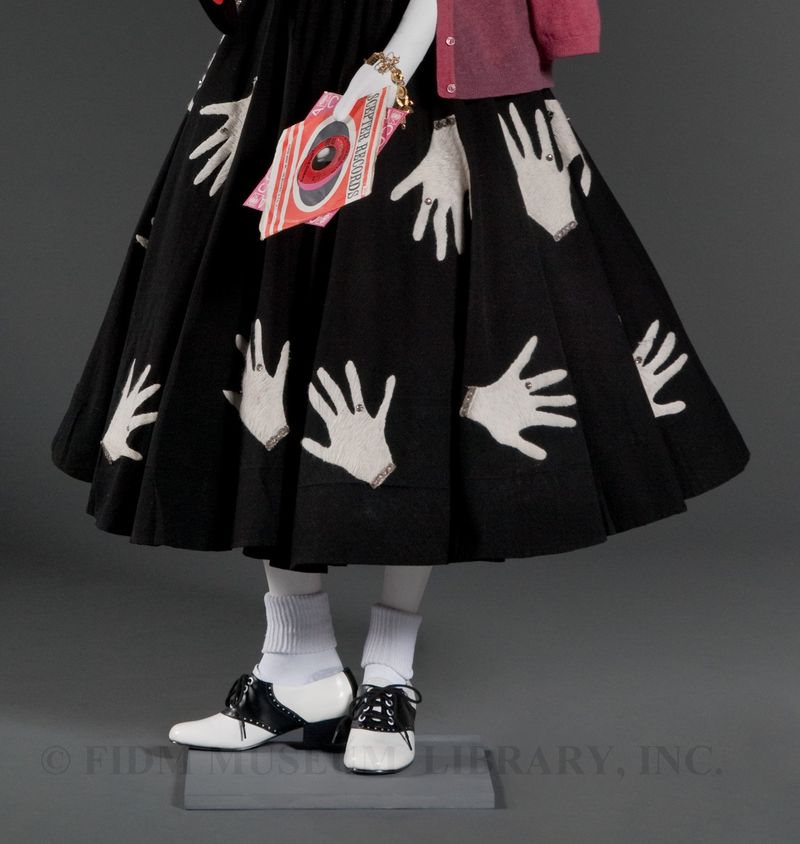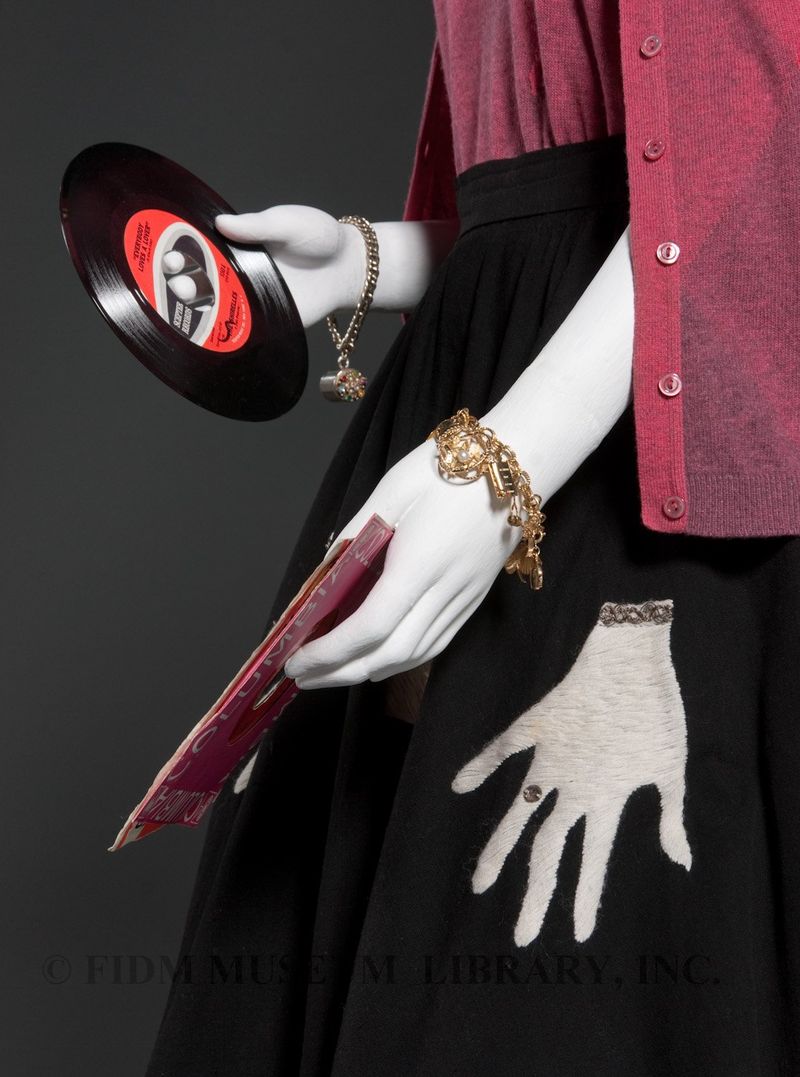Surrealist circle skirt, c. 1955
There's so much to say about this skirt! It's a classic 1950s circle skirt, but the embroidered, bejeweled hands decorating the skirt can be interpreted through a variety of lenses. More than just a decorative motif, these hands reach toward artistic movements of the 20th century, including Surrealism and Mexican folk art.
The ghostly white, disembodied hands suggest the work of Surrealist artists, including that of Elsa Schiaparelli, queen of Surrealist fashion. The primary goal of Surrealist art and literature was to liberate individual and collective consciousness by integrating the world of dreams with conventional perceptions of reality. In visual terms, this goal was expressed through startling, sometimes shocking, juxtapositions that forced familiar objects into new realms. Meret Oppenheim's 1936 fur-covered teacup, saucer and spoon is a classic example of the way Surrealist art forces the viewer to reevaluate conventional reality.
Surrealists often featured disembodied body parts in their visual art. Eyes, hands and lips were removed from the body, floating through space with no anchor or hint as to their practical purpose. Elsa Schiaparelli used a pair of manicured hands to fasten her 1934 belt; this clasp that has been imitated many times since. Though created in the 1950s, after the 1930s heyday of Surrealist art, the embroidered hands decorating this circle skirt suggest a link to the work of Surrealist art.
 Circle skirt
Circle skirt
c. 1955
Cotton with wool and metallic embroidery
Gift of an Anonymous Donor
S98.10.2
A peak at the label inside this skirt reveals another possible interpretation of the bejeweled hands. The black and white label reads: Tachi Castillo, Taxco, Mexico. During the 1950s, printed and hand-painted circle skirts were produced in Mexico for the tourist market, and for export to Mexican-themed sportswear shops in the United States. This sequin-embellished circle skirt from our collection is a classic example of the style. The bright colors and vibrant designs appealed to a population in search of casual, stylish clothing for their leisure hours.
Taxco, the original home of our hand skirt, was a popular tourist destination, primarily because of its many silver workshops. Though Taxco boosted many silver mines, these were not exploited for local benefit until the arrival of William Spratling in the late 1920s. A professor of architecture at Tulane University in Louisiana, Spratling decided to settle in Taxco after several exploratory trips to Mexico. Spratling worked with locals to produce inventive silver jewelry based on pre-Columbian and folk art designs. The jewelry was sold locally at Spratling's shop Las Delicias, and was also exported to the United States. Eventually, some of the artisans who worked with Spratling began establishing their own silver workshops. This expansion led to a vibrant local industry. By the late 1940s, Taxco was a well-known spot, popular with adventurous tourists.
Of course, tourists wanted other souvenirs too. Tachi Castillo, the designer of this skirt, owned a local shop that produced skirts and dresses primarily for the tourist market. Castillo's creations included circle skirts with bright embroidery, jackets made from brightly colored ribbons and dresses with alternating bands of pintucked cotton and lace. Castillo was part of a Taxco family involved in the jewelry industry. Her uncles worked with William Spratling from the early 1930s, eventually establishing their own workshop called Los Castillos.
Given the influx of international tourists to Taxco, including European refugees fleeing the spread of Nazi Germany, and the reputation of Frida Kahlo, Mexico's own Surrealist, Tachi Castillo was probably aware of Surrealist art. Was this skirt created in homage to the Surrealists? Or were the "silver" bracelets and rhinestone rings worn by each hand intended as a whimsical homage to Castillo's hometown and the silversmithing heritage of her family?
